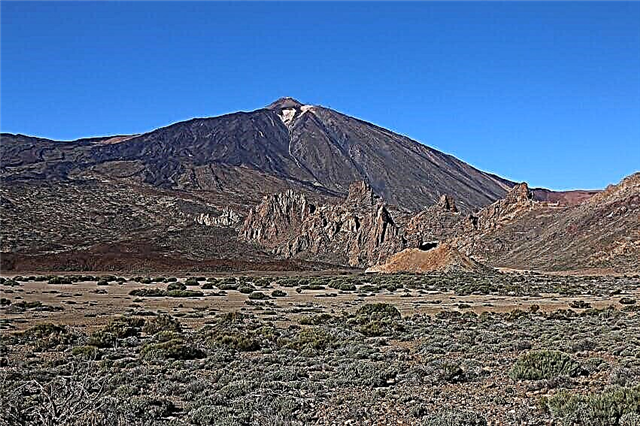Unsolved mysteries on our planet are getting smaller every year. Constant improvement of technology, cooperation of scientists from various fields of science reveals to us the secrets and mysteries of history. But the secrets of the pyramids still defy understanding - all discoveries give scientists only tentative answers to many questions. Who built the Egyptian pyramids, what was the construction technology, is there a curse of the pharaohs - these and many other questions still remain without an exact answer.
Description of the Egyptian pyramids
Archaeologists say about 118 pyramids in Egypt, partially or completely preserved to our time. Their age is from 4 to 10 thousand years. One of them - Cheops - is the only surviving "miracle" from the "Seven Wonders of the World". The complex called "Great Pyramids of Giza", which includes the pyramid of Cheops, was also considered as a participant in the "New Seven Wonders of the World" competition, but it was withdrawn from participation, since these majestic structures are actually a "wonder of the world" in the ancient list.
These pyramids have become the most visited sightseeing sites in Egypt. They have been perfectly preserved, which cannot be said about many other structures - time has not been kind to them. Local residents also contributed to the destruction of the majestic necropolises, removing the cladding and breaking stones from the walls to build their homes.
The Egyptian pyramids were built by the pharaohs who ruled from the XXVII century BC. e. and later. They were intended for the repose of the rulers. The huge scale of the tombs (some - up to almost 150 m) were supposed to testify to the greatness of the buried pharaohs, here were also things that the ruler loved during his lifetime and which would be useful to him in the afterlife.
For the construction, stone blocks of various sizes were used, which were hollowed out of the rocks, and later brick became the material for the walls. Stone blocks were turned and adjusted so that a knife blade could not slip between them. The blocks were stacked on top of each other with an offset of several centimeters, which formed a stepped surface of the structure. Almost all Egyptian pyramids have a square base, the sides of which are oriented strictly to the cardinal points.
Since the pyramids performed the same function, that is, they served as the burial place of the pharaohs, then inside the structure and decoration they are similar. The main component is the burial hall, where the ruler's sarcophagus was installed. The entrance was not arranged at ground level, but several meters higher, and was masked by facing plates. From the entrance to the inner hall there were staircases and passages-corridors, which sometimes narrow so much that it is possible to walk along them only squatting or crawling.
In most necropolises, burial chambers (chambers) are located below ground level. Ventilation was carried out through narrow channel-shafts that permeate the walls. Rock paintings and ancient religious texts are found on the walls of many pyramids - in fact, from them scientists get some information about the construction and owners of burials.
The main mysteries of the pyramids
The list of unsolved mysteries begins with the shape of the necropolises. Why was the pyramid shape chosen, which is translated from Greek as "polyhedron"? Why were the faces located clearly on the cardinal points? How did the huge stone blocks move from the mining site and how were they raised to great heights? Were the buildings erected by aliens or people who own a magic crystal?
Scientists even argue over the question of who built such tall monumental structures that have stood for millennia. Some believe they were built by slaves who died in hundreds of thousands each building. However, new discoveries by archaeologists and anthropologists convince that the builders were free people who received good nutrition and medical care. They made such conclusions based on the composition of the bones, the structure of the skeletons and the cured injuries of the buried builders.
All the deaths and deaths of people involved in the study of the Egyptian pyramids were attributed to mystical coincidences, which provoked rumors and talk about the curse of the pharaohs. There is no scientific evidence for this. Perhaps the rumors were started to scare off thieves and looters who want to find valuable things and jewelry in the graves.
The tight deadlines for the construction of the Egyptian pyramids can be attributed to the mysterious interesting facts. According to calculations, large necropolises with that level of technology should have been built in at least a century. How, for example, was the Cheops pyramid built in just 20 years?
Great Pyramids
This is the name of the burial complex near the city of Giza, consisting of three large pyramids, a huge statue of the Sphinx and small satellite pyramids, probably intended for the wives of the rulers.
The original height of the Cheops pyramid was 146 m, the side length - 230 m. Built in 20 years in the XXVI century BC. The largest of the Egyptian landmarks has not one but three burial halls. One is below ground level, and two are above the baseline. Intertwining passageways lead to the burial chambers. On them you can go to the chamber of the pharaoh (king), to the chamber of the queen and to the lower hall. The pharaoh's chamber is a pink granite chamber with dimensions of 10x5 m. It contains a granite sarcophagus without a lid. None of the scientists' report contained information about the mummies found, so it is not known whether Cheops was buried here. By the way, the mummy of Cheops was not found in other tombs either.
It still remains a mystery whether the Cheops pyramid was used for its intended purpose, and if so, then apparently it was plundered by marauders back in the past centuries. The name of the ruler, by whose order and project this tomb was built, was learned from the drawings and hieroglyphs above the burial chamber. All other Egyptian pyramids, with the exception of Djoser, have a simpler engineering structure.
Two other necropolises in Giza, built for the heirs of Cheops, are somewhat more modest in size:
Tourists come to Giza from all over Egypt, because this city is actually a suburb of Cairo, and all transport interchanges lead to it. Travelers from Russia usually travel to Giza as part of excursion groups from Sharm el-Sheikh and Hurghada. The trip is long, 6-8 hours one way, so the tour is usually designed for 2 days.
The great structures are accessible only during working hours, usually until 5 pm, in the month of Ramadan - until 3 pm. It is not recommended to go inside for asthmatics, as well as for people suffering from claustrophobia, nervous and cardiovascular diseases. You should definitely take drinking water and hats with you on the excursion. The excursion fee consists of several parts:
- Entrance to the complex.
- The entrance to the inside of the pyramid of Cheops or Khafre.
- Entrance to the Sun Boat Museum, on which the body of the pharaoh was transported across the Nile.

Against the background of the Egyptian pyramids, many people like to take photos, sitting on camels. You can bargain with camel owners.
Djoser's pyramid
The first pyramid in the world is located in Saqqara, near Memphis, the former capital of Ancient Egypt. Today, the pyramid of Djoser is not as attractive to tourists as the necropolis of Cheops, but at one time it was the largest in the country and the most complex in terms of engineering design.
The burial complex included chapels, courtyards, and storage facilities. The six-step pyramid itself has not a square base, but a rectangular one, with sides 125x110 m. The height of the structure itself is 60 m, there are 12 burial chambers inside it, where Djoser himself and his family members were supposedly buried. The mummy of the pharaoh was not found during excavations. The entire territory of the complex, 15 hectares, was surrounded by a stone wall 10 m high. At present, part of the wall and other buildings have been restored, and the pyramid, whose age is approaching 4700 years, has been preserved quite well.









